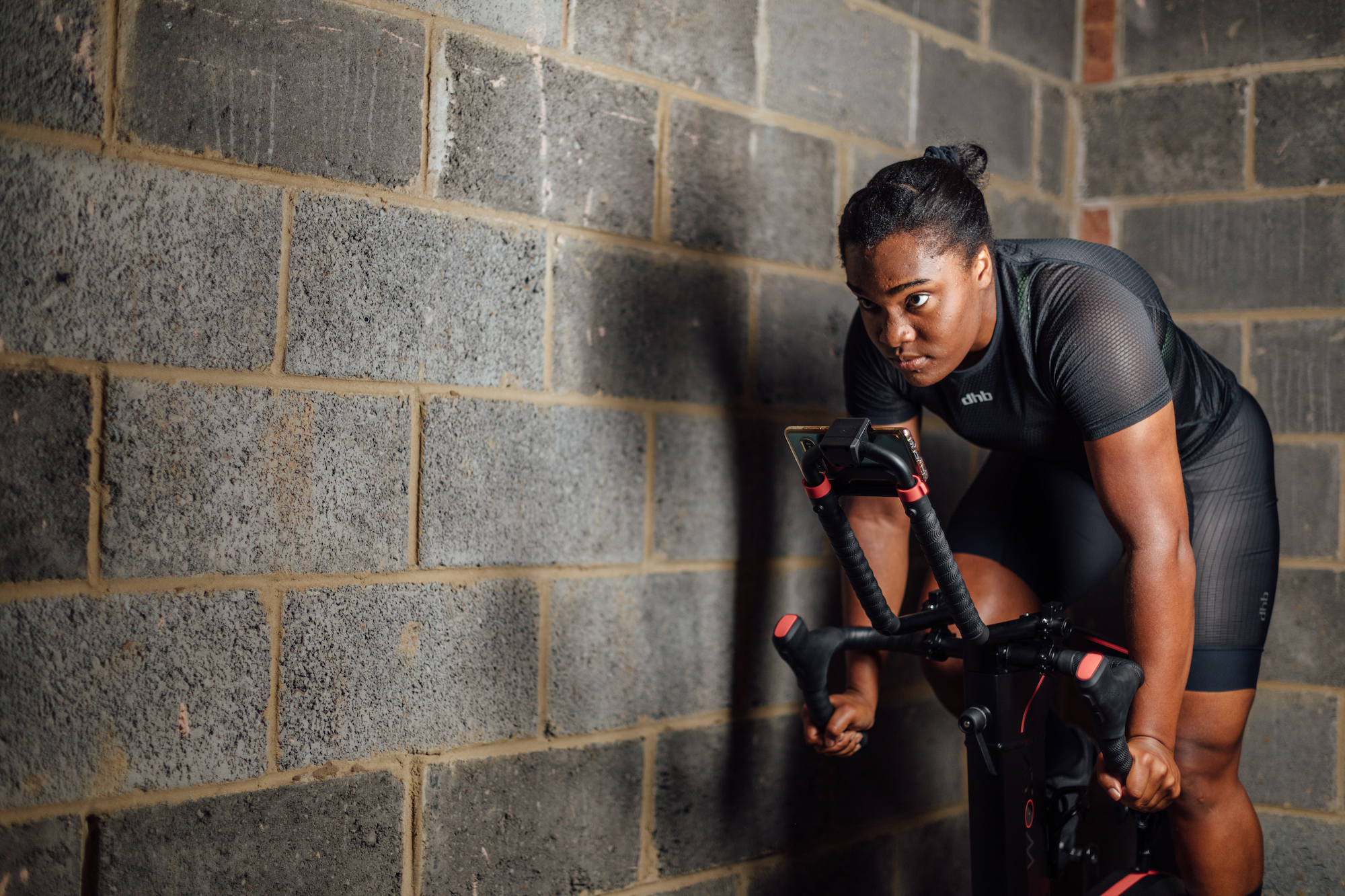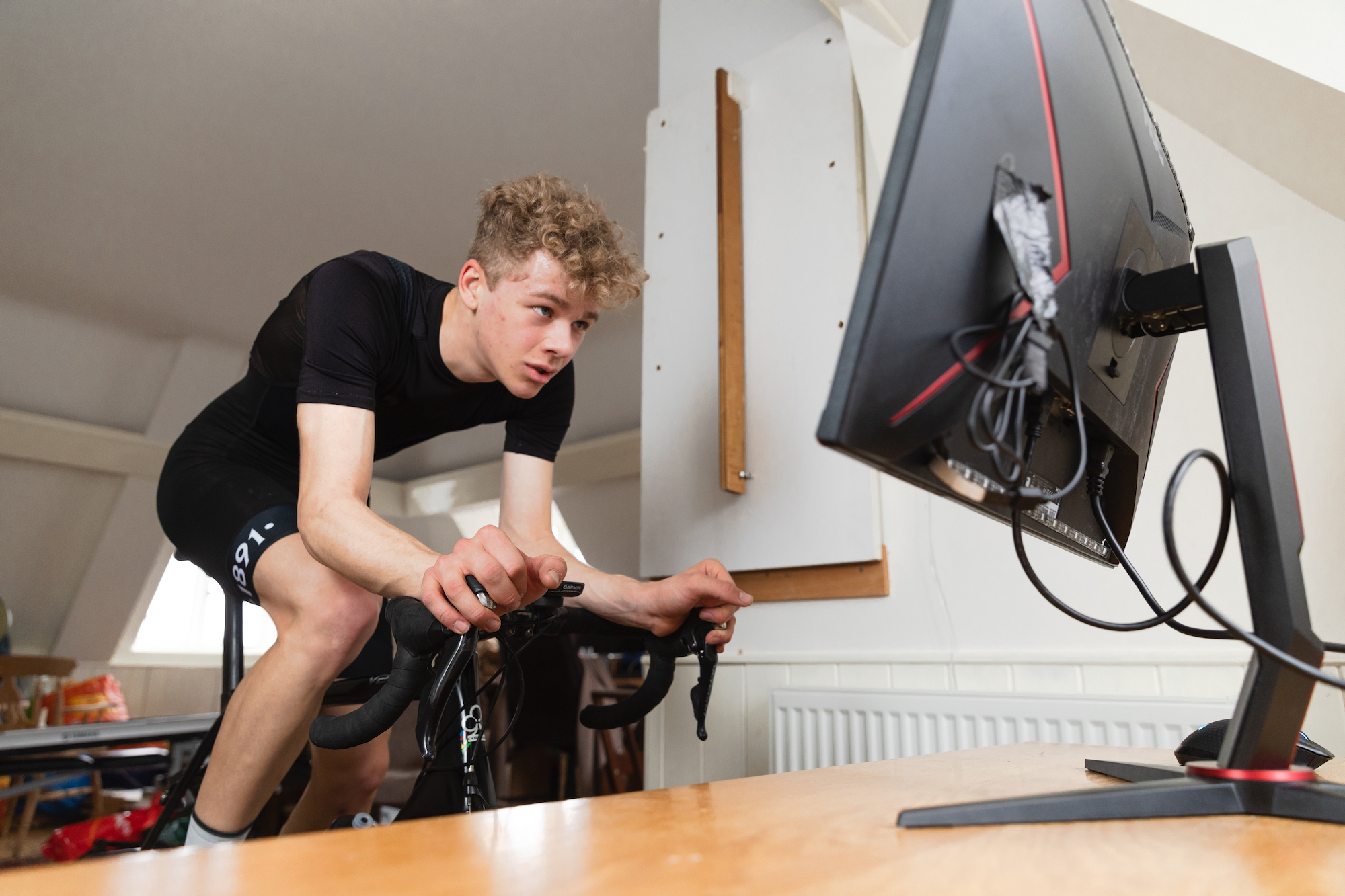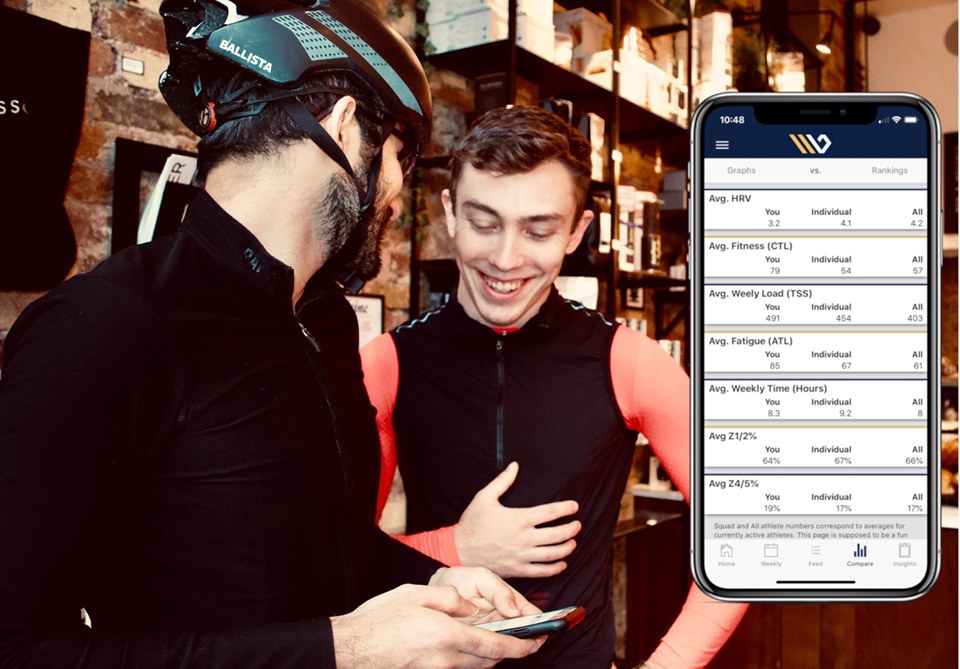What is heart rate variability and can cyclists use it to avoid burn-out?
We dive into the emerging metric which might help athletes predict state of recovery and avoid overtraining


Amateur endurance athletes who seek out the assistance of a coach can arguably be split into two distinct camps: those who need to be pushed to train, and those who need to be told when to stop.
Tracking heart rate variability (HRV) can be easily done on best smartwatches for cycling such as the Garmin Epix 2, and it could be particularly beneficial for the latter group, because it may be able to give a clear indication as to when recovery is needed.
For the former group, it can be used to track training effect and boost motivation to improve.
Founder of training and recovery tracking app 'Wattson Blue', Dr Ali Cigari, created his system after retiring from rowing in his final PhD year at Oxford university.
The app monitors heart rate variability alongside a host of subjective metrics to assess an athlete's readiness to train, something Cigari felt he'd have benefitted from during his rowing career.
"In reality, I'm much fitter now - training alongside a full time job, than I was then, because I was overtraining.
"The coach would ask me how I felt, and I'd say "I feel great" - but I didn't, I was sleeping five hours a night or stressed about my work. Once you have the data in front of you, it's harder to lie to yourself.
Get The Leadout Newsletter
The latest race content, interviews, features, reviews and expert buying guides, direct to your inbox!
"If I'd skipped the morning sessions, I'd have been ok and could have continued rowing. Sometimes you need to be told to hold back, and sometimes you need to be told 'you're fine, keep going'."
What is heart rate variability?

Resting heart rate (RHR) has long been used as an indicator of an athlete's fitness and overall health.
However, improvements in technology mean that it's now possible for amateurs to level up, and track 'heart rate variability' (HRV) with minimal equipment.
A person may have a RHR of 60 beats a minute but their heart does not beat once a second. There are variances in the frequency, and that's what HRV measures. Specifically, the milliseconds between the 'R peaks' in the heart's electrical pattern.

Training stress, life stress, work stress, lack of or plentiful sleep, alcohol and caffeine - variables often affecting amateur athletes on a daily basis - can all lower HRV. Proper rest and a relaxed state of mind will increase it. A heavy training load may see it decrease, before rebounding with adequate recovery.
Whilst research is still emerging, and more is needed to draw absolute conclusions, studies have shown that when used correctly it can be a reliable way of predicting when an endurance athlete is ready for an intense session in the upper training zones, and when they should rest or dial it back.
"Changes in daily HRV are a much better reflector of recovery levels compared to resting heart rate," Cigari explains.
"Generally, variability in your heart rare, so high HRV, has been associated with good health. However, that is not always the case, and the bigger picture is understanding the HRV and trends. So we look at HRV alongside your training, subjective metrics a d sleep data to give you feedback."
One study found that when athletes were split into two groups: one half completing pre-planned training, and the others completing sessions based upon HRV, the latter group improved at a greater rate (5 per cent at peak power, 14 per cent VT2 and 7 per cent in a 40 minute time trial) despite averaging the same training volume.
However, when one group of researchers added in female participants, they found no increased in performance for those women using HRV, though the HRV group was able to achieve the same performance gains whilst completing fewer high intensity sessions. A review of existing research pointed out that when tracking women's responses, scientists needed to take into account the phase of the menstrual cycle for conclusions to be useful.
It's important to note that HRV is individual. Whilst some studies have found a higher baseline HRV might point towards an athlete who is more receptive to training, there's little point comparing yours with that of another person. The important factor is your current HRV vs your own baseline.
The coaches' view
Hunter Allen, co-author of 'Training and Racing with a Power Meter' and coach at Peaks Coaching Group has been tracking HRV via the app and wristband 'Whoop' for almost a year.
"I have recently become a fan of HRV. As you train harder and harder, and become more and more fatigued, it's a question of whether or not you can still produce the power you need in the correct training zone in order to continue to gain effective training stress," Allen explains.
"Many times I have seen athletes HRV low and they are still killing it in their workouts. Other times I have seen athletes with a multi day low HRV and not able to complete workouts and on a couple of occasions even become sick."
To use the HRV effectively, you need to build up a bank of data, and combine the numbers with subjective measures.
"Like any tool , a powermeter or a device to measure your muscle oxygen or a HRV tracker, you have to combine it with how you feel, you motivation level, your goals and your build/rest cycles to accurately decide the best thing to do on the day."
HRV can also be used to determine which factors within your day-to-day life affect you the most. Cigari noted that certainly food groups had an impact, whilst Allen points out that the effect of alcohol is pronounced.
"What has been eye opening for me has been the impact of alcohol on my HRV. Normally, when rested and recovered, my HRV will be in the 90-110 range, but just one glass of red wine or two beers will knock it down to 40!
"I believe that some of this could be contributed to the poor sleep that comes from drinking alcohol in the evening, but clearly alcohol for me is a real negative for my performance. I have noticed this on 80 per cent of my clients as well so definitely alcohol is not a good recovery enhancement protocol!"
How can I use heart rate variability in my training?

There are several apps out there which track HRV, usually alongside a range of other recovery based metrics such as sleep duration and quality.
Popular app 'Whoop' requires users to wear a band which tracks metrics such as HRV, RHR and sleep, whilst the 'ithlete' app uses a finger sensor or heart rate monitor for one daily reading.
'WattsonBlue' has a relatively low threshold for entry, as it lets you record your HRV using the camera on the back of your smartphone. It's free until you want to store the data long term.
Cigari explained to us: "New phones have really high quality cameras, when you shine light through the skin, you see your blood go through the capillaries."
To use HRV effectively, you need to build up a data bank in order to determine your baseline figure. Without this, it's not possible to determine if you are above this (fit and well recovered) or below it (fatigued).
It's also important that, if you're taking HRV readings manually (such as via a smartphone camera), you must build this into a routine. Factors such as caffeine, having just rehydrated or showered, and a state of excitement or agitation can all have an effect.
"When you wake up, a lot of people's bodies are very excited. You need to take 10 minutes to go and put the kettle on, sit down, then do it - and avoid browsing content on your phone which might agitate you, such as news headlines.
"If you sometimes forget, sometimes do it after a shower, something do it after having caffeine, sometimes do it after a large glass of water, it becomes not very useful - you need to be consistent for the data to be useful," Cigari explains.

Thank you for reading 20 articles this month* Join now for unlimited access
Enjoy your first month for just £1 / $1 / €1
*Read 5 free articles per month without a subscription

Join now for unlimited access
Try first month for just £1 / $1 / €1
Michelle Arthurs-Brennan the Editor of Cycling Weekly website. An NCTJ qualified traditional journalist by trade, Michelle began her career working for local newspapers. She's worked within the cycling industry since 2012, and joined the Cycling Weekly team in 2017, having previously been Editor at Total Women's Cycling. Prior to welcoming her first daughter in 2022, Michelle raced on the road, track, and in time trials, and still rides as much as she can - albeit a fair proportion indoors, for now.
Michelle is on maternity leave from April 2025 until spring 2026.
-
 'This is the marriage venue, no?': how one rider ran the whole gamut of hallucinations in a single race
'This is the marriage venue, no?': how one rider ran the whole gamut of hallucinations in a single raceKabir Rachure's first RAAM was a crazy experience in more ways than one, he tells Cycling Weekly's Going Long podcast
By James Shrubsall
-
 Full Tour of Britain Women route announced, taking place from North Yorkshire to Glasgow
Full Tour of Britain Women route announced, taking place from North Yorkshire to GlasgowBritish Cycling's Women's WorldTour four-stage race will take place in northern England and Scotland
By Tom Thewlis